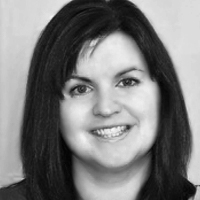Learning Objectives:
The learning objectives that I hope that you all will learn today are relevant to the dementia population. They are differentiating between challenging behaviors and symptoms in someone with dementia. I hope that after today’s discussion, you will be able to:
- Create a behavioral profile of someone with dementia in order to analyze their behavior and implement strategies to effectively assist them in their environment.
- Demonstrate several key communication strategies that will help you to further work with your residents or clients with dementia.
- Learn strategies for working with the common behaviors we will discuss such as wandering or difficulty with bathing or dressing.
- Identify ADL support strategies so that you can gain some skills in your current therapeutic interventions to assist your care partners (family members of individuals with dementia, nursing and activities personnel).
Before we get into the meat of the presentation today, I would like for all of you to think about, or better yet, if you have a piece of paper in front of you, write down some of the behaviors and challenges when working with persons with dementia. Did you write the words wanders or wanderers? How about the word incontinent? How about attention-seeking? Aggressive? How about biter? Words that we tend to use are stereotypical and we tend to label clients. It is just out of professional practice that we do that. We need to try to think about some alternatives. Instead, when we think about someone who wanders or someone who is a “wanderer”, let’s think about the person as someone who likes to walk. In the case of someone who is incontinent, this is an individual who has toileting difficulty. Better yet, in the attention-seeking resident we discussed, let’s think about those as being people that like to socialize or interact with others. Utilizing person-centered care will require us, as clinicians, to use person-centered language.
